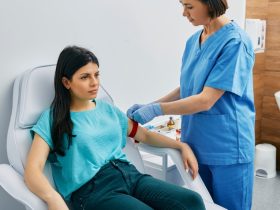As the field of dentistry continues to evolve, technological advancements have emerged as indispensable instruments that contribute to the enhancement of patient care, the optimization of office administration, and the enhancement of diagnostics. When it comes to these advancements, intraoral dental cameras of superior quality stand out as an investment that is absolutely necessary for dental practices that are striving to attain excellence in terms of both clinical outcomes and economic sustainability. This article delves into the financial advantages of purchasing high-quality dental cameras, demonstrating the revolutionary influence that these cameras have on the productivity of dental practices, the level of happiness experienced by patients, and the amount of income generated.
The Improvement of Diagnostic Accuracy
When it comes to obtaining intraoral pictures, a high-quality dental camera provides an unrivaled level of clarity and precision, which enables dentists to make precise diagnoses and build individualized treatment programs. The use of these cameras helps to improve diagnosis accuracy, which in turn reduces the risk of treatment mistakes and needless operations. As a result, these cameras help to minimize wasted costs and maximize resource utilization.
The acceptance of treatment has increased
The patient’s knowledge and acceptance of therapy are both significantly impacted by the presence of visual proof. Dentists are able to effectively explain treatment suggestions, depict oral health concerns, and underline the need of preventative care to their patients with the assistance of high-resolution intraoral pictures obtained by modern dental cameras. When patients have a better grasp of the dental problems they are experiencing and the treatment choices available to them, they are more likely to consent to the operations that are advised to them. This results in higher case acceptance rates and larger revenue increases.
Efficiency in the use of time and optimization of workflow
When it comes to any dental office, time is a valuable commodity, and streamlining processes is very necessary in order to maximize both productivity and revenue. It is no longer necessary to rely on laborious and time-consuming traditional methods such as handwritten notes or sketches since high-quality dental cameras make chairside recording more efficient. Due to the fact that they are able to take comprehensive pictures in a rapid and easy manner, dentists are able to speed up exams, treatment operations, and patient consultations, which ultimately results in an increase in patient throughput and income for the practice.
Enhancements to the Planning and Documentation of Interventions
When it comes to delivering high-quality dental care and protecting oneself from any legal liabilities, comprehensive documentation is very necessary. Through the use of dental cameras of superior quality, dentists are able to acquire photographs of intraoral diseases, treatment methods, and treatment outcomes that are both clear and of a high resolution. These visual records are extremely helpful tools for planning therapy, monitoring progress, and evaluating the patient’s development once treatment has been completed. By ensuring that detailed documentation is kept, dental offices have the ability to improve the results of treatment, reduce the number of disputes that occur, and sustain professional standards, thus lowering the possibility of adverse legal consequences that are expensive.
Advantage in the Market and Differentiation from All Others
In today’s highly competitive dentistry market, it is vital to differentiate oneself from one’s colleagues in order to attract and keep patients. Investing in dental cameras of superior quality not only indicates a dedication to technical advancement and care that is centered on the patient, but it also improves the whole experience that the patient has. Patients are increasingly drawn to medical practices that make use of cutting-edge technology in order to provide improved results and individualized care. Gaining a competitive advantage, cultivating patient loyalty, and driving office expansion are all possible outcomes for dental practices that establish themselves as pioneers in dental technology.
Discounts on Long-Term Expenses
Despite the fact that the first investment in high-quality dental cameras can appear to be substantial, the long-term cost savings that these cameras provide much transcend the initial expense completely. In the long run, dental cameras add to the profitability of practices by lowering the number of expensive retreatments that are required, reducing the number of dental insurance coverage denials that occur, and enhancing the results of treatment. Furthermore, the longevity and dependability of high-quality camera systems mean that there will be little expenses associated with maintenance and downtime, which further enhances the economic worth of these systems over time.
The Capacity for Adaptation and Future
In the field of dentistry, which is a field that is continually evolving, new techniques and technology are produced at a much faster rate. In order to ensure that dental offices remain adaptable and resistant to technological obsolescence, it is imperative that they invest in high-quality dental cameras. All of these cutting-edge technologies, including teledentistry and artificial intelligence, as well as modern practice management software and digital imaging programs, are able to be simply combined with advanced camera systems. Being at the forefront of technology innovation is one way for dental offices to position themselves for continuing development and relevance in a world that is becoming increasingly digitized.
It cannot be denied that purchasing dental cameras of superior quality can result in significant financial benefits. These cutting-edge technologies have the potential to revolutionize dental offices and create a sustainable economic success. They have the ability to improve diagnosis accuracy and treatment acceptability, as well as optimize workflows and guarantee cost savings over the long term.








